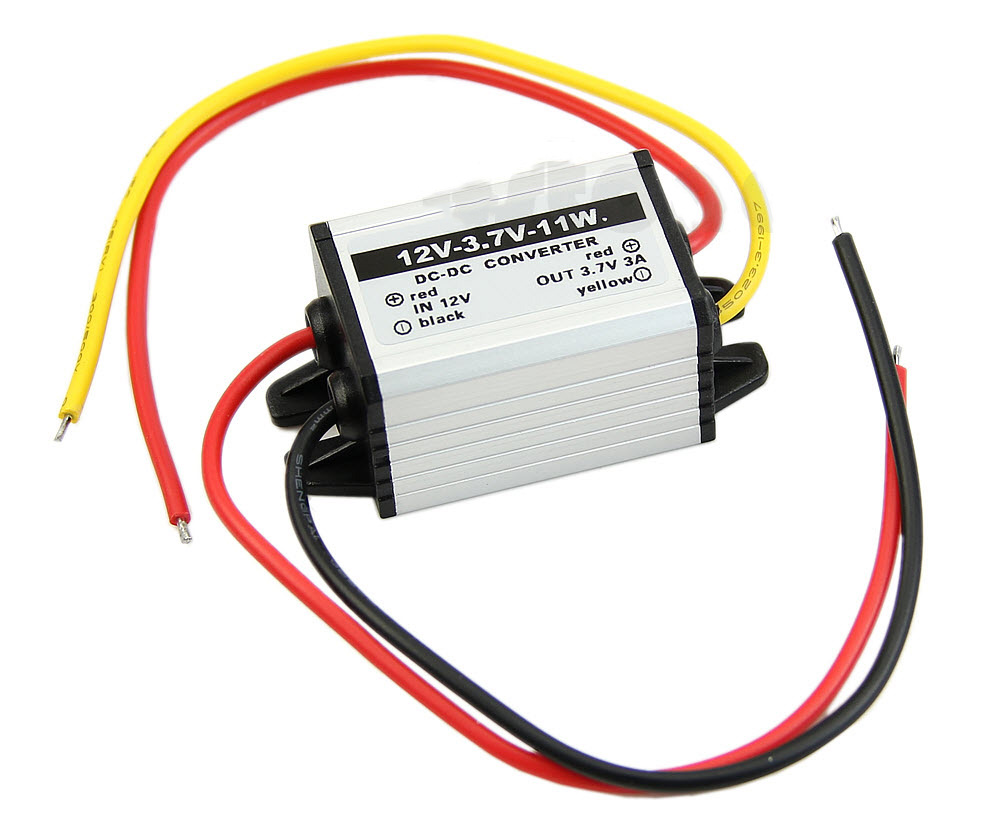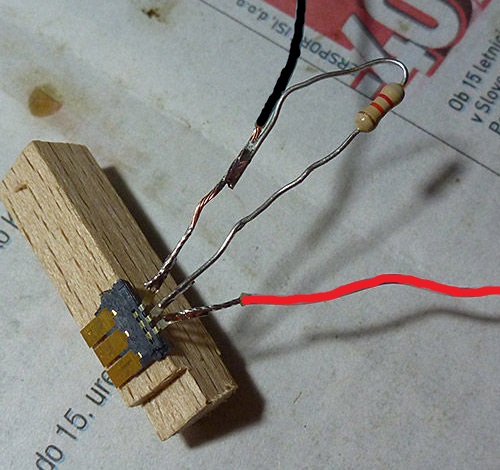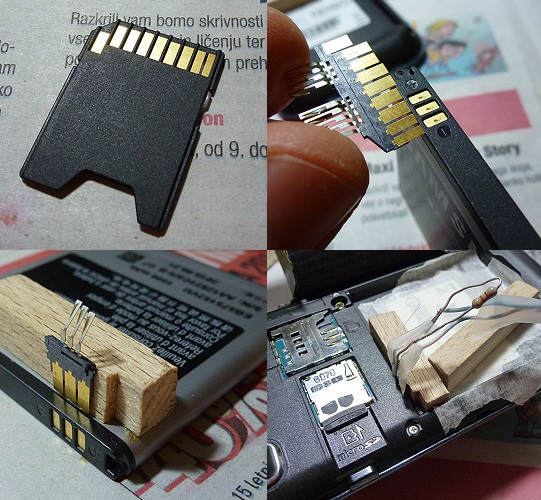This seems like it should be simple. Phones of all variety – Android, Apple, “smart” and “dumb” use 3.7-3.85V single cell lithium-ion batteries. Just attach a 3.7V DC adapter to the (+) and (-) terminals of the phone and you’re good to go, right? Wrong. A bit more trickery is required, and some additional finesse is well worth the effort.
Two things are absolutely essential for this. First is a DC adapter with 3.7-4.2V output rated at 1.5A or greater. I used a DC-DC adapter for 12V input and 3A, 3.7V output, available on eBay. If you don’t mind a bit more work, this step-down converter is fully adjustable by removing the heat shrink and turning a screw (while connected to a multimeter), allowing for 12V input and your choice of <10V output, and is actually what I ended up preferring to use. An AC adapter may be more convenient, depending on the intended use, though I had a hard time finding an inexpensive option with sufficient output (1.2A was the best I found). 12V AC-DC adapters are cheap and plentiful, so you could always just combine one of those with either of the DC-DC step-down converters from above (which could likely power 2-3 phones in parallel).

The second item needed is a resistor. This bridges the ground and BSI (Battery Status Indicator) contact. If a fourth contact is present, this is likely for NFC, and will be left alone. For samsung phones, the BSI pin is typically found between the (+) and (-). The purpose of the resistor is to identify the battery as compatible with the phone and may also assist in reporting the capacity / charge level / temperature. The 68K resistor I used, plus the 3.7V output from the adapter made my Galaxy Nexus report a battery level of 14%. I also tried a 100K resistor, which reported a similar, or slightly lower, capacity. With further testing (using the adjustable step-down converter), it appears that the input voltage of the battery, rather than resistor size, determines the phone’s reported battery level, through a resistor is still necessary for the phone to recognize the battery and power on. I ended settling on 4.15V, which made the phone report 100%.

If you want a removable solution, you can construct a “faux battery” using your scrap material of choice and a microSD to SD card adapter – if you’re anything like me, you have an unused one laying around. There’s a good example of this over on Instructables:

Of course, you could just solder directly to the contacts on the phone, which may not be a bad idea if the modification will be anything approaching permanent. The “faux battery” solution can be made quite sturdy, but nothing beats solder for peace of mind.
This solution works great for in-place installations such as home automation remotes, fixed displays and long-endurance photo / video, cellular hotspot and communication uses. Unfortunately, for a hands-free implementation in a car or similar situation where the phone would ideally boot up when power is connected, additional work will be needed, as simply connecting power – just like inserting a new battery – does not result in the phone turning itself on. You’d likely need to disassemble the power button and simulate a “momentary press” using capacitors / relays, which is beyond the scope of this post. I may revisit this topic though, as I constructed such a solution back when I made a CarPC (before Android and cheap tablets were a thing).
